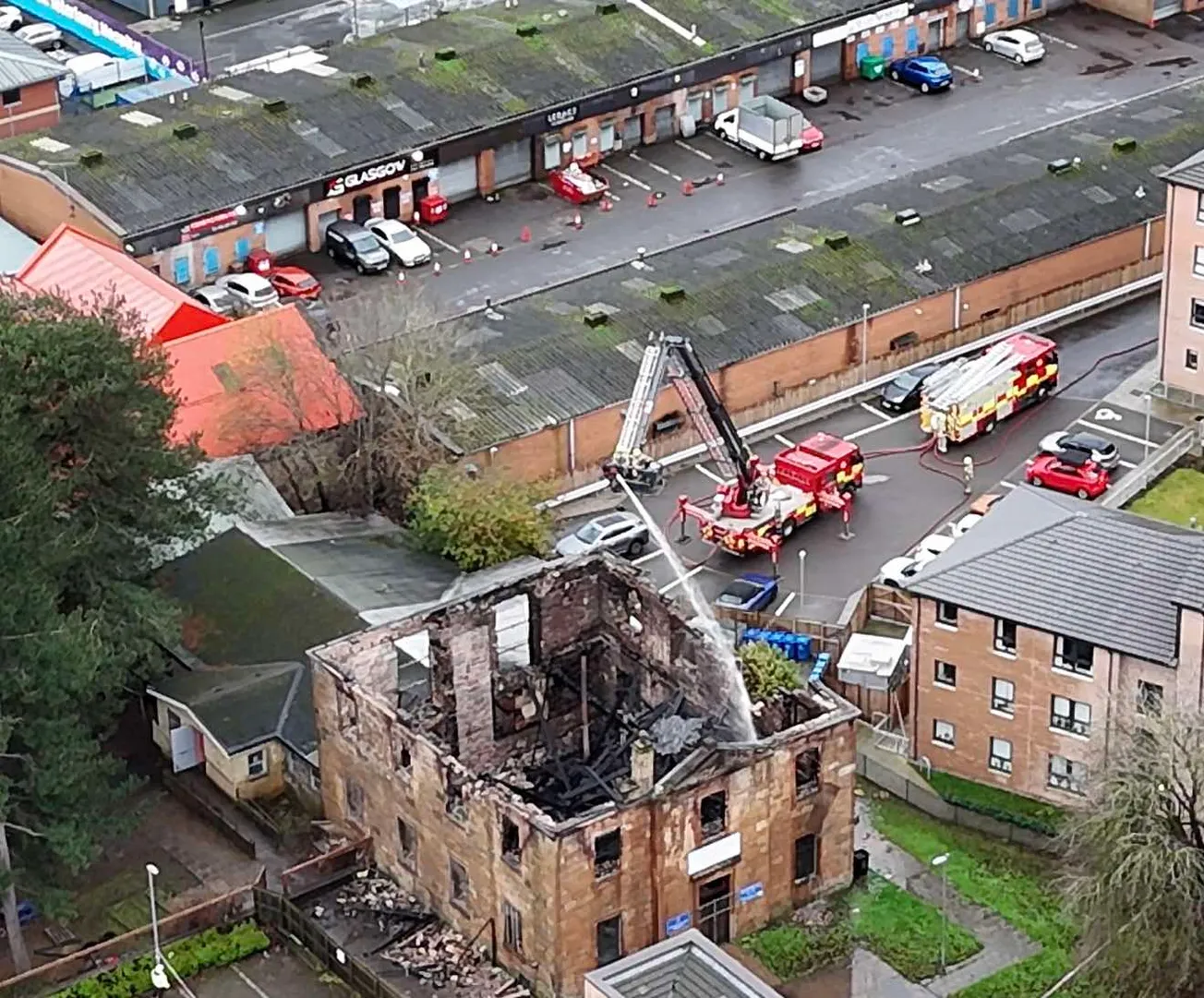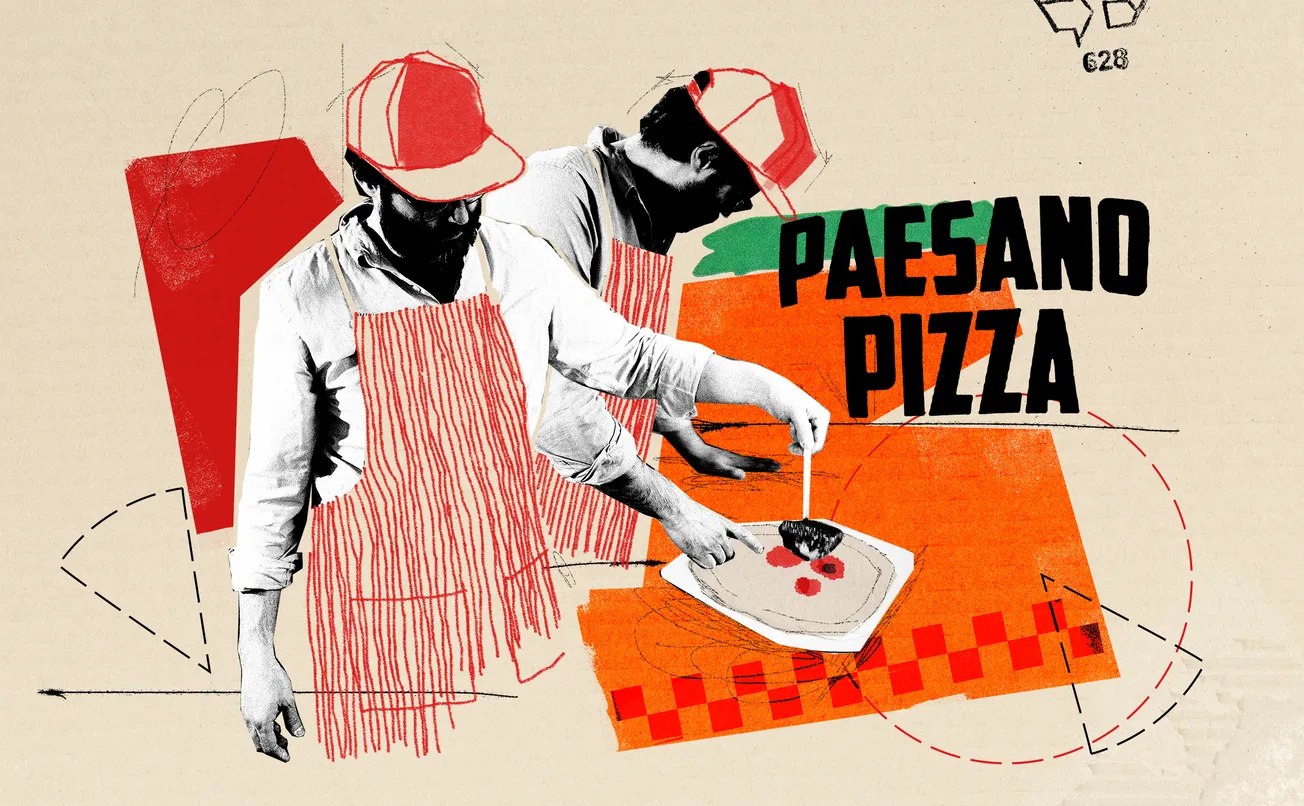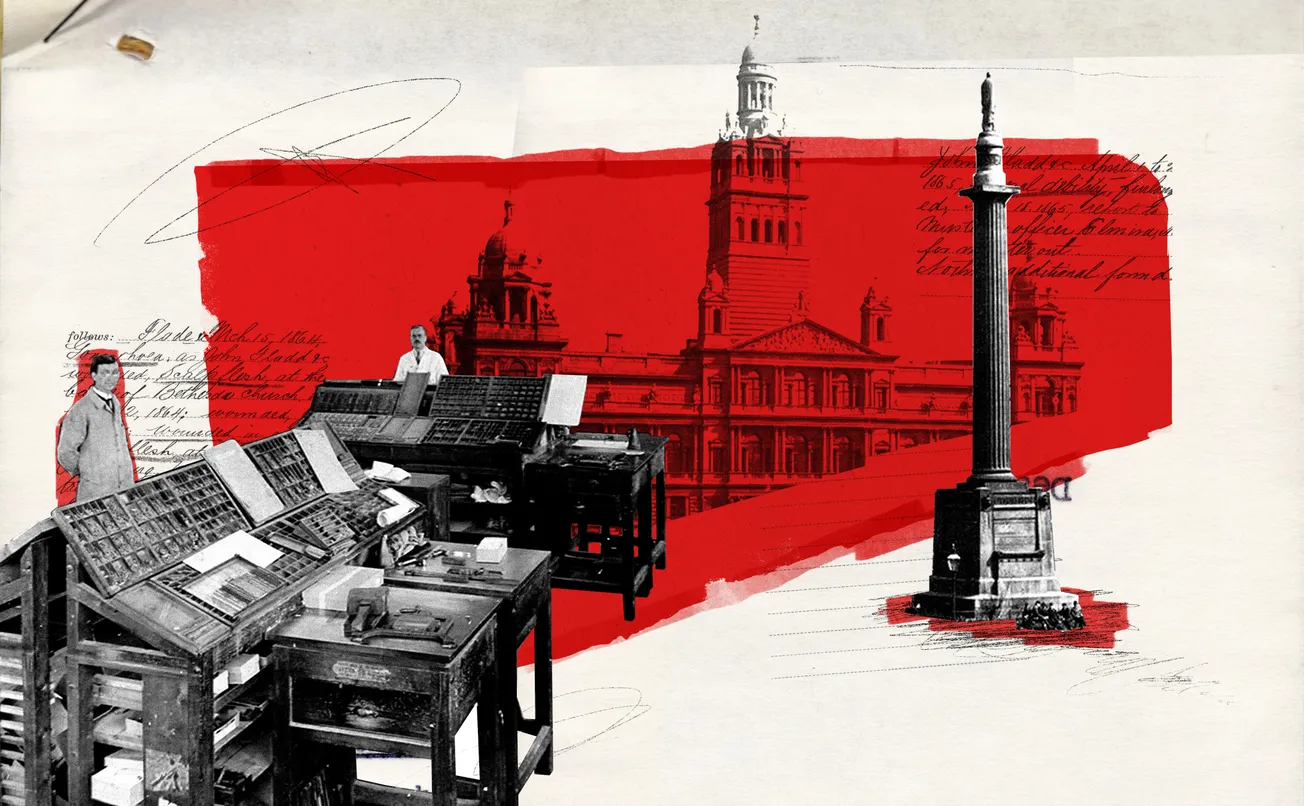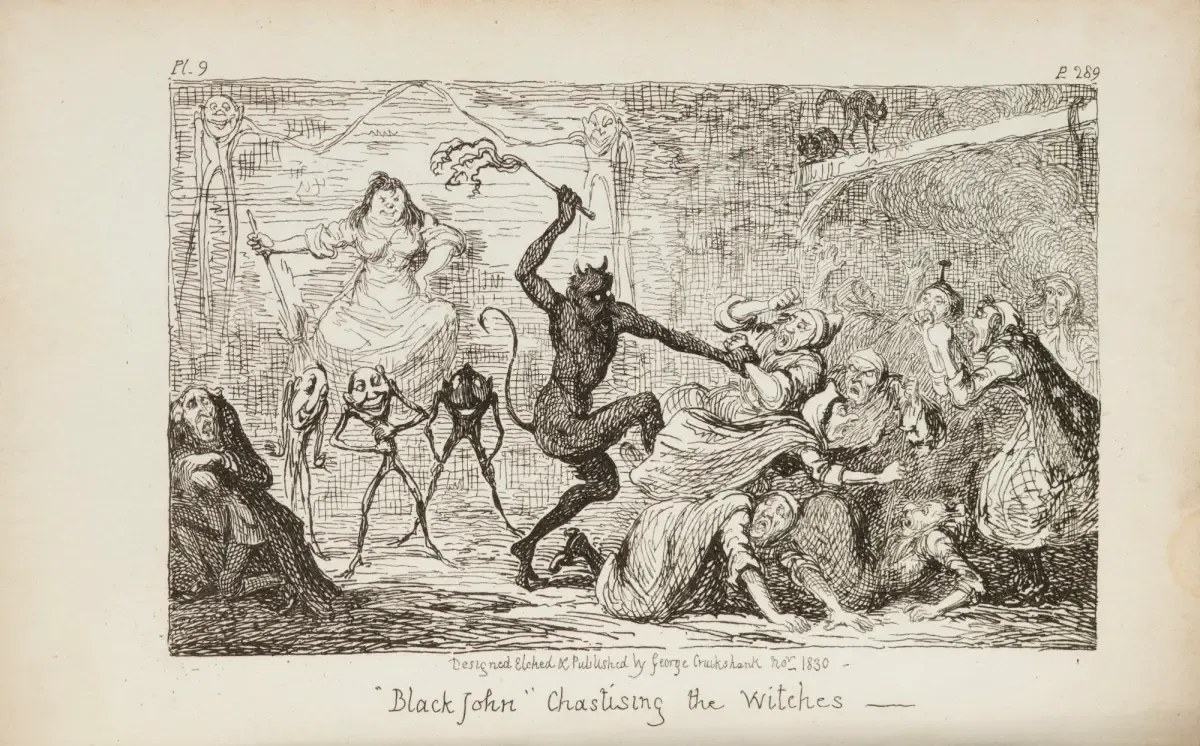I must have been about 11-years-old when I learned that my hometown had once been a crucible of witchcraft. It came as a bit of a shock. I’m from Erskine, a small commuter town not far from Glasgow. Most people in the Central Belt know the Erskine Bridge, which straddles the River Clyde here and is sometimes glamorously billed, “the gateway to Loch Lomond and the Highlands”, but few know Erskine the town. A collection of scattered housing estates, a smattering of schools, basic amenities, and a large Morrison’s supermarket. There’s not much to it. Or so I thought.
As an adult, I’ve come to appreciate the charms of Erskine. Step outside of my mum’s house, where I grew up, and from the doorstep, you can see the Kilpatrick hills, capped with snow in winter. On a clear day, a short walk up the local reservoir reveals Ben Lomond’s flat summit in the distance. Angle your phone to avoid the empty beer cans and crisp wrappers lounging in the grass at your feet and you can get some cracking photos. Now, I can’t think of a better place than Erskine to spend one’s childhood.
But growing up, I struggled to decide exactly what my home was. I knew that it wasn’t the countryside, but neither was it town, or city. It lacked substance, was undefinable, hard to pin down. The idea of the place having any history seemed impossible.
The story of the Renfrewshire Witch Hunt has many beginnings. Mine starts in a creative writing class in Erskine’s Bridgewater library where, during the school holidays that bridged my transition from primary to secondary school, I was told a tale. It went like this.
Many years ago, in 1696, when Renfrewshire was mostly farmland, an 11-year-old girl named Christian Shaw lived in Bargarran House with her parents. Christian’s father was John Shaw, the Laird of Bargarran. Bargarran was just a hamlet back then, nowadays it’s part of Erskine.
John Shaw was rich, and the Shaws had many servants, including a woman from the Highlands, Katherine Campbell, who was known for her fiery temper. One day, Christian spied Katherine in the kitchen, taking a drink of milk. Christian decided that she must be stealing and told her parents so that they could reprimand her. This enraged the servant, who cursed the little girl.
“May the devil harle your soul through hell”, is what she said, say some.
From then on, events in the Shaw household turned sinister. Little Christian grew very sick and took to her bed. The poor child would writhe around, screaming out in pain. She had fits, she levitated, she shouted, she convulsed. She vomited up a string of disgusting objects: bones, coal, sticks, feathers, hair.
“I’ve been cursed by a witch”, yelled the little girl. “I’ve been possessed by the devil.”
My face, and that of the other children in my class, must have been quite the picture. Imagine our shock to discover that Erskine, our hometown, place of red grit football fields and the Gulf garage, where the most exciting event in recent years had been the opening of the local swimming pool, had once seen true supernatural activity. It was horrifying and fantastic, all at once.
By the pricking of my thumbs, something wicked this way comes... But a quick word before you delve deeper into the dark world of the Paisley witch hunt.
We’re Glasgow's new local paper, delivered entirely by email. Sign up to our mailing list and get two totally free editions of The Bell every week: a Monday briefing, full of everything you need to know about what’s going on in the city; and an in-depth weekend piece like this one.
We're on a mission to bring back quality local journalism. To see for yourself, just click the button below and get our unique brand of local journalism straight to your inbox.
From her sick bed, Christian Shaw went on to accuse over 20 people of being witches. Of those she named, seven individuals were found guilty on a variety of charges, including murder and torment: Katherine Campbell, Margaret Lang, John Lindsay, James Lindsay, John Reid, Margaret Fulton and Agnes Naismith.
Six of the convicted were executed on the Gallow Green in Paisley, on 10 June 1697. Their deaths would have been agonising; garrotted, then their bodies burnt. John Reid escaped such a fate, having been found dead in his cell — very possibly due to suicide — some weeks before the execution date. The remains of the guilty were buried under an iron horseshoe at a busy crossroads in the town. Legend goes that, should the horseshoe ever be misplaced, great sorrow will befall Paisley.
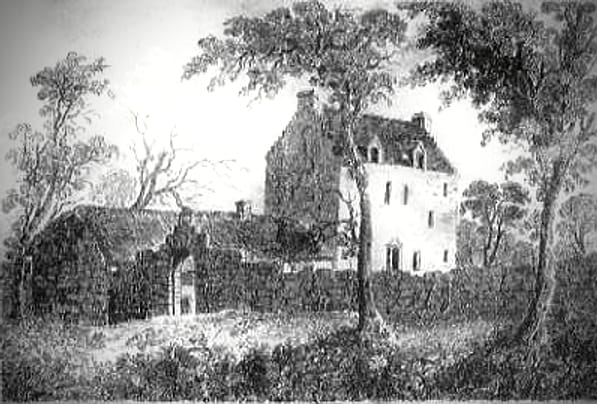
It might anyway; before she died, Agnes Naismith allegedly laid a curse upon the town: “The walls of the abbey will fall, the banks of the River Cart will burst, and Paisley will fall into ruin.”
The Renfrewshire witches’ story has haunted me, throughout the years. When I first heard the tale, I was the same age as Christian Shaw at the time of the trials. I usually prefer to keep my distance from the occult. I take no risks; no ouija boards, no psychics, no tempting fate. But this isn’t the case for local man, Alan Smith. Smith claims to have seen spirits from a young age and has lived in countless haunted houses. When the supernatural refused to retreat from his life, he thought he’d best embrace it. Now he’s a ‘rescue medium’, ordained demonologist, and the founder of Renfrew Paranormal Investigators (RPI). I first get in touch with him by Facebook, before we speak one evening by phone.
Smith’s work with RPI is two-fold, helping spirits move on to the afterlife, and offering support, free of charge, to people being bothered by haunted objects or supernatural beings. “We’re here to help”, he says. He first encountered the story of the Renfrewshire Witches during an investigation at Sma’ Shot Cottages in Paisley, “I had a young girl come through, Christian Shaw. She said she’d lived in Erskine and been cursed…”
Now based in Renfrew, at the time of his Paisley investigation, Smith was living in Erskine. After his encounter with Christian, he found himself drawn to Erskine woods. “There’s definitely [supernatural] activity down there, day and night”, he says. He says some photos he’s taken there show portals, strange figures, apparitions and what look like witches.
The woods are the location of some of the so-called ‘witches’ trees’. Others are dotted around Erskine itself. I hear from around a dozen people, some former classmates, in their thirties and forties, and others, older Erskine residents, now retired. As children, they’d heard that, “this is where the witches were hung,” one long-time resident says. Another was told certain trees were spellcasting sites. One particular tree, opposite 38 Aytoun Drive in Bargarran, is mentioned repeatedly. It’s a ten-minute walk from my mum’s house.
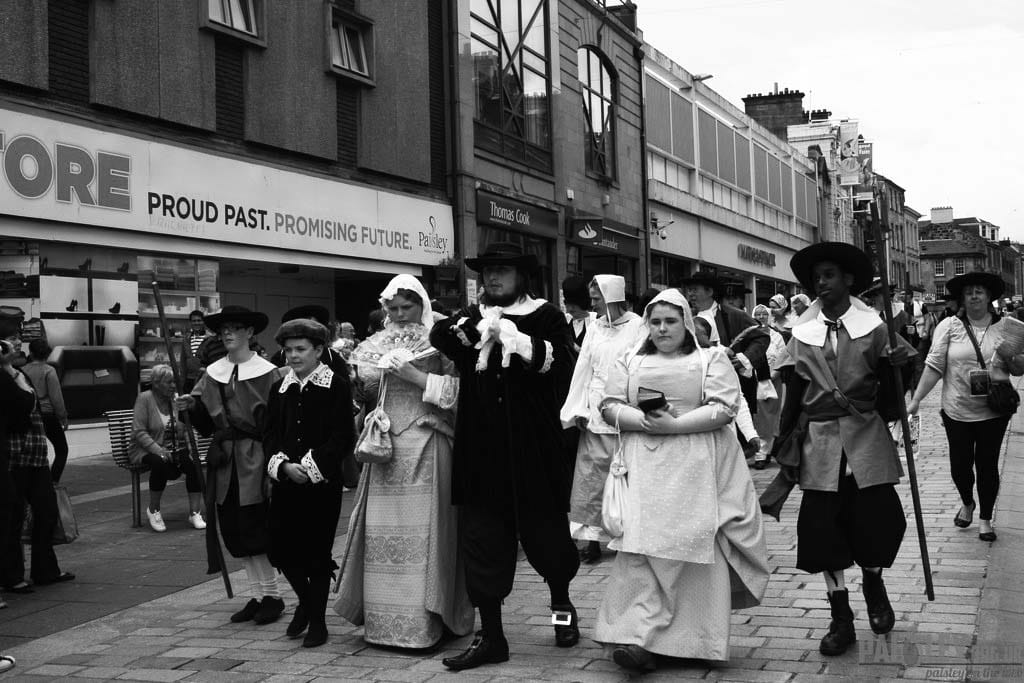
I know it’s silly, but I’m a little nervous as I approach. I chide myself for leaving any room for the unexpected. Before I reach the tree though, a strange thing does happen. An old lady with a stick is coming towards me on the narrow footpath. Suddenly, she stops and asks me what I’m looking for. I’m so taken aback — how I can possibly look lost in my hometown? — that I blurt out the truth: “the witches’ tree”. She smiles and points a finger. “It’s over there, just to the left”.
The witches’ tree is a tall oak with a “no ball games” sign next to it. Aytoun Drive itself is quiet and residential, a row of neatly kept council houses. There’s nothing untoward here. But I say good morning when I see a magpie and before leaving, I do an even stranger thing. I walk around the tree, making sure to complete a full circle around the trunk. I don’t know why.
I can’t help thinking of the seven found guilty. Shockingly, the Lindsay brothers were just children when they were killed, not much older than Christian Shaw herself. They’re rumoured to have been the town rascals, the kind of kids who these days would play “chappy” and have phones that screeched music at top volume. Agnes Naismith was frequently at the doors of the rich too, begging for alms. The witch trials were a useful opportunity for the Church, and those in power, to rid the community of those it deemed an “annoyance”, and to stoke fear in those left behind.
Seven innocent people died. “It’s a good story and everything”, says Claire Henvey but, “people don’t understand that they weren’t witches”. Henvey is a member of the evening meeting group for practising pagans in the local area, the Paisley Weavers Moot. JL Givens, a writer from Erskine and author of a children’s book based on the events of the Renfrewshire Witch trials, agrees. When she tours her book around local schools, she takes care to make clear the difference between the fantastical idea of a witch and the reality of the witch trial victims.
Givens will enter classes wearing a pointy cap and traditional witchy garb before taking off her hat, etc, standing in front of the children in her everyday clothes. She tells them, “This is what a witch looked like, they were just ordinary people.”
On a dreich, grey day I set out on the 757 McGill’s bus from Erskine to Paisley to see the horseshoe plaque, which I’ve never knowingly seen. The bus ride brings back memories of trips up to Paisley with friends on Saturdays. Giddy little girls, allowed up to town on our own. In shops playing loud music we’d dither over how to spend our pound coins. Neon rubber bracelet or a scented lipbalm? Back then, the town was booming.
Paisley High Street was pedestrianised in 1997. At the time, the move seemed visionary. Princess Diana had opened the Paisley Centre five years previously. If I close my eyes, I can picture the Paisley of my childhood; thriving, bustling, buoyant. Sometimes, you’d have to stand on the bus home. These days, the town centre is hollowed out and the High Street looks like a mouth whose teeth have been pulled. Only a skeleton of shops remain. Some folk say the witch’s curse has come to pass, but as Givens wryly remarks, “it’s probably more to do with the council”.`
Renfrewshire Witch Hunt is often billed as the last mass witch hunt in Western Europe. A claim to fame of sorts, but not one local authorities seem keen to publicise. The memorial sits in the middle of the busy intersection at Maxwellton Street and George Street. Anyone hoping to stay in the land of the living will have a hard job racing across lanes of traffic to see the modest bronze plaque with its embedded horseshoe and inscription, “Pain inflicted. Suffering endured. Injustice done.”
Round the corner is a rumoured witches’ well, standing on a patch of green, sandwiched between two tenement buildings. The name is a misnomer; Gayle Pollock, trustee of charitable organisation, Renfrewshire Witch Hunt 1697, tells me that the structure is not in fact a well and has “nothing to do with the witches. It’s a flooded ventilation staff from Victorian minings.” But it does indeed stand on the last remaining patch of what would have been Paisley’s Gallow Green.
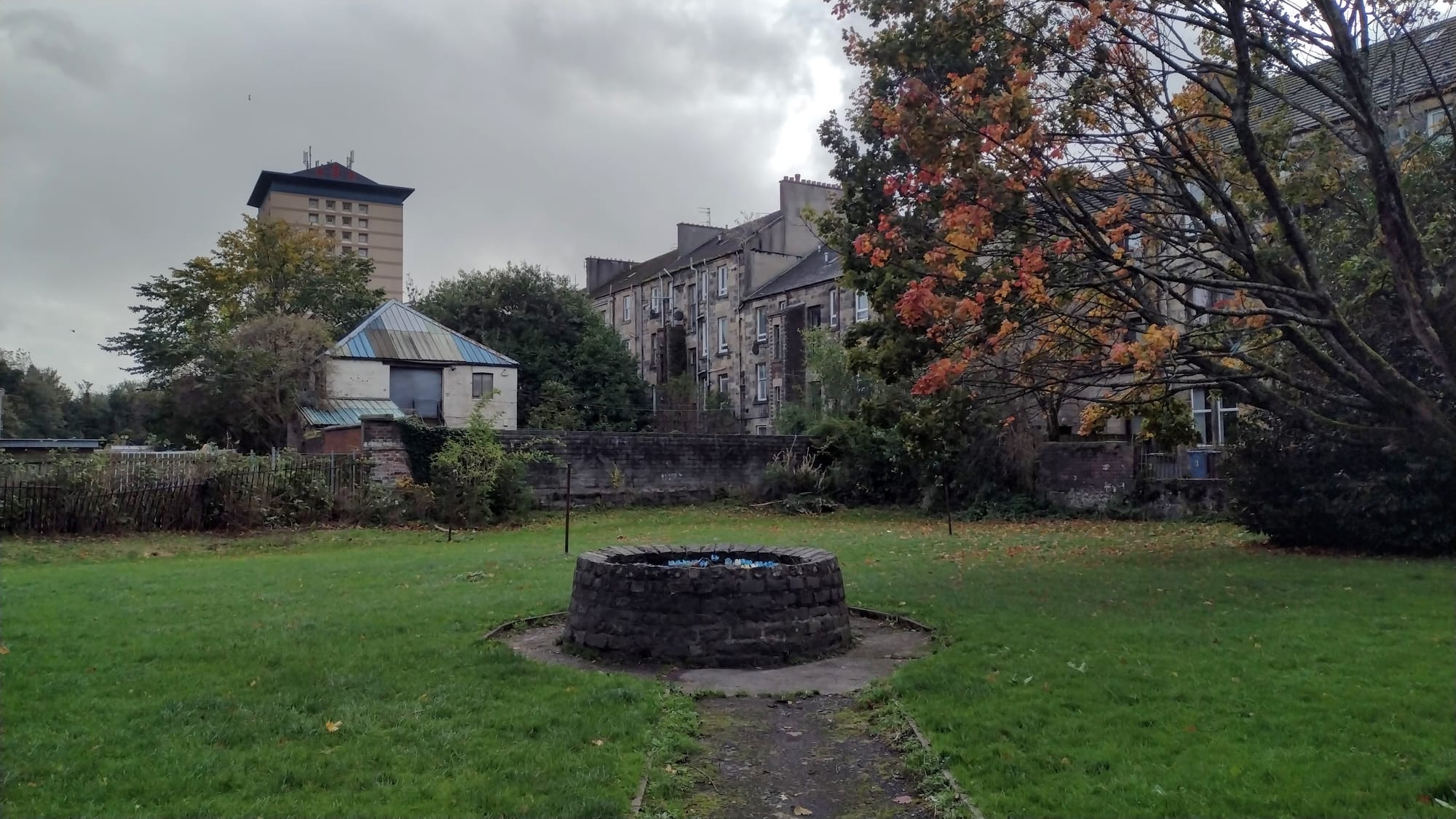
Claire Henvey and other members of her Moot often hold rituals here. I watch a beautiful video on their Facebook page, of a young woman singing a song in Gaelic during one such rite. Her voice is clear and pure. Such rituals are a way of noticing and commemorating the victims. “The pain needs to be remembered”, says Henvey, who is keen to point out that in some African countries people are still being tried and punished, on account of supposed witchcraft. Henvey thinks it’s important to be aware of the modern-day witch hunts “going on around us… who’s getting bullied, who’s getting their freedom taken away”.
Claire Mitchell KC agrees, “When the State and the Church get together and tell you that a vulnerable group in society is the cause of all your ills, be very, very suspicious.”
Blessed be, dear reader. A quick reminder: you can sign up to The Bell entirely for free.
Just click the button below, pop in your email address and you'll get two free editions every week that'll keep you up to date about Glasgow's goings on and show you a side to the city you haven't seen before. Enjoy!
Mitchell, along with Zoe Venditozzi, is one half of the Witches of Scotland campaign, “dedicated to seeking justice for the nearly 4,000 individuals, predominantly women, who were accused of witchcraft in Scotland between 1563 and 1736”. She remembers sitting up at the faculty of advocates in Edinburgh one night, reading about Bloody Mackenzie, “watching a woman accused of being a witch and being interrogated. This poor woman, in a state of some distress said, ‘can you be a witch and not know it?’. I actually felt my eyes well up with tears.”
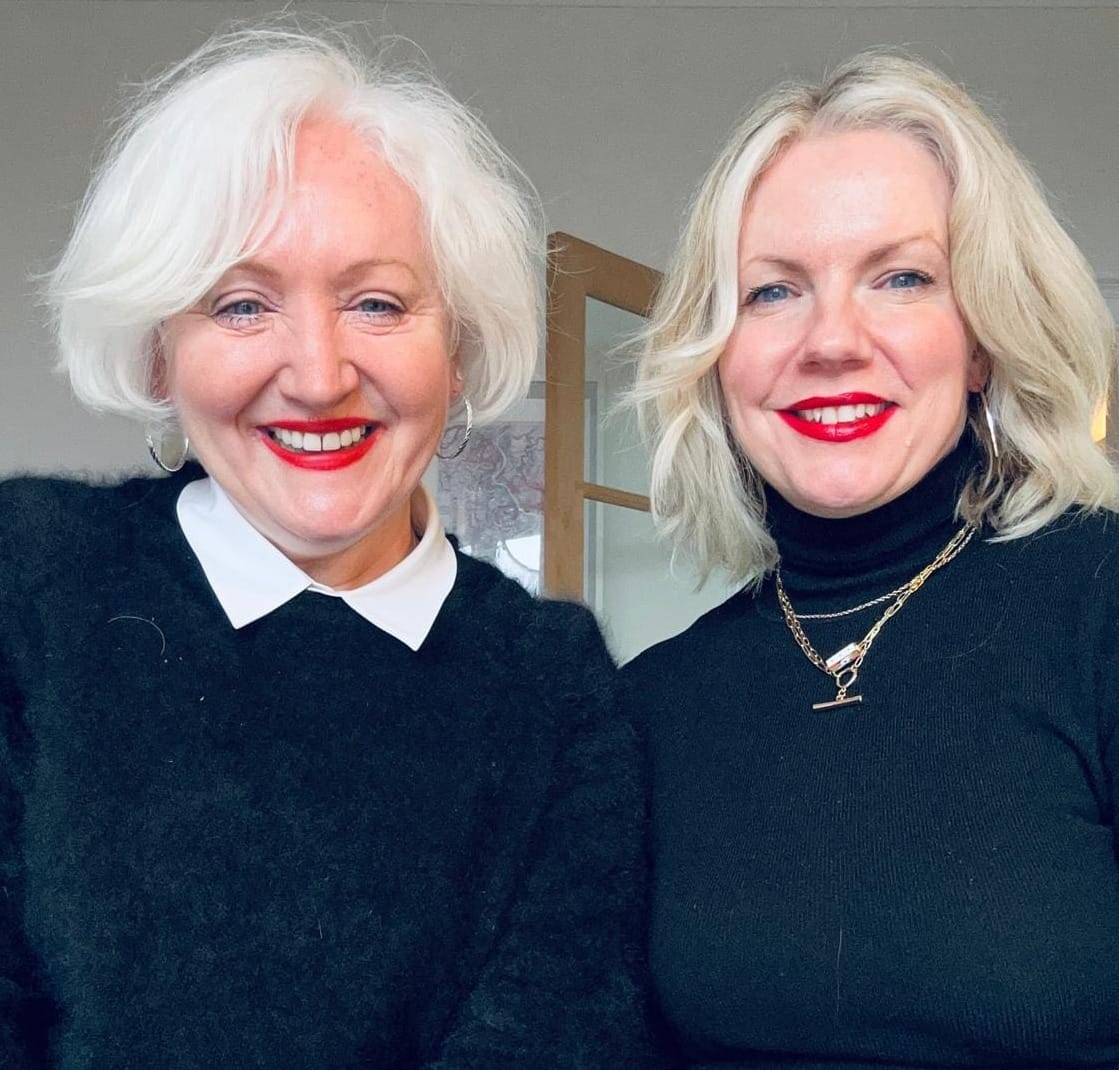
Part of the WoS campaign, which was launched in 2020, involves fighting for a national memorial to victims of the witch trials. In 2022, they received a formal apology from the Scottish Government but no national memorial. This had become a “real sticking point”, says Mitchell. She and Venditozzi knew what they didn’t want – no “lonesome woman standing looking out to sea, with her clothes inexplicably falling off and an inexplicably perfect body”. But narrowing down how to best commemorate victims was more difficult.
Unveiled in January of this year, the Witches of Scotland memorial tartan was borne of Mitchell’s visit to a tartan exhibition at Dundee’s V&A museum. “Hitherto, I thought tartan was for weddings, or for posh men on a night out. I didn’t think of tartan as democratic or an item for the people.” At the exhibition, however, were people of all ethnicities and backgrounds telling the story of their tartan. The WoS tartan is an effort to imbue, “the colours and thread count of the fabric with meaning so that people could have their own piece of memorialisation to the people that were executed as witches” and to “continue to make that link to the present day.”
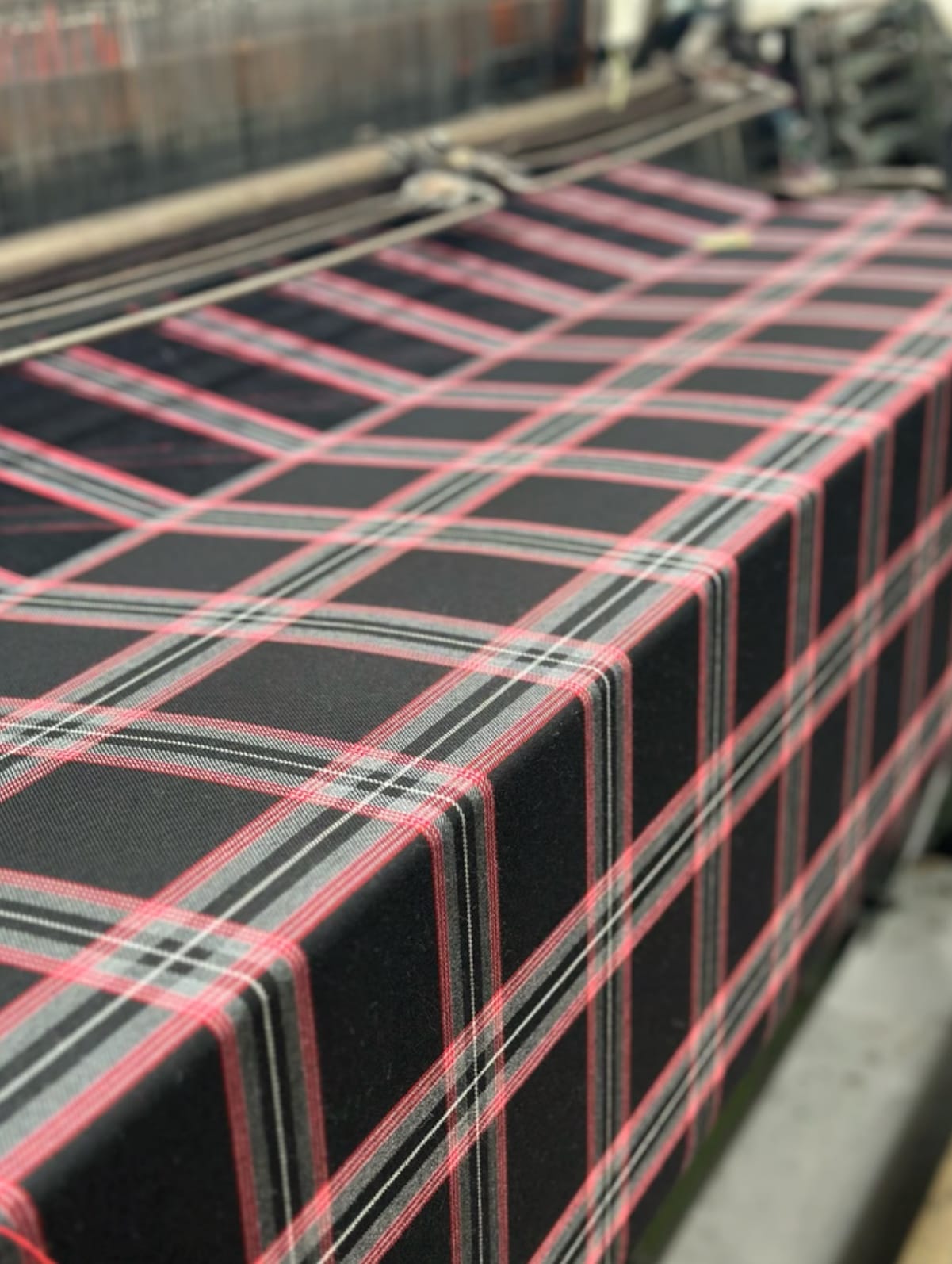
Back in Paisley, the community has quietly produced their own memorial to the seven victims of the Erskine witch hunt: small hardy tags, crafted from the bottom of plastic bottles have been securely fastened to the grid that tops the witches’ well. On each, the name of a victim and their date of death is written, in waterproof ink.
Christian Shaw’s legacy is also contested. She went on to become a founding figure of Renfrewshire’s thread industry. Gayle Pollock tells me that every so often, the idea of a plaque commemorating what she did for Paisley will come up. She agrees but recalls the example of the statues of “Victorian men who brought prosperity and jobs to Glasgow”, and “did it on the back of the slave industry.” Have a plaque or a statue to Shaw she says but be “transparent” about the fact that, while she brought wealth to the town, she also instigated, “the last largest witch trial in Scotland”.
Henvey thinks the memorials hanging on Paisley’s witches’ well were made by the Girl Guides. I was a Girl Guide once too. I stand for a moment in front of that stone circle, then take the tags one by one, seeking out the names I remember from my class in the library, holding them between forefinger and thumb.
Katherine Campbell, Margaret Lang, John Lindsay, James Lindsay, John Reid, Margaret Fulton, Agnes Naismith.
Stepping back from the well, I find myself performing my own ritual, of sorts. “I’m sorry”, I tell them quietly.
If someone forwarded you this newsletter, click here to sign up to get quality local journalism in your inbox.
If you’d like to sponsor editions of The Bell and reach over 11,000 readers, you can get in touch or visit our advertising page below.
Comments
How to comment:
If you are already a member,
click here to sign in
and leave a comment.
If you aren't a member,
sign up here
to be able to leave a comment.
To add your photo, click here to create a profile on Gravatar.


